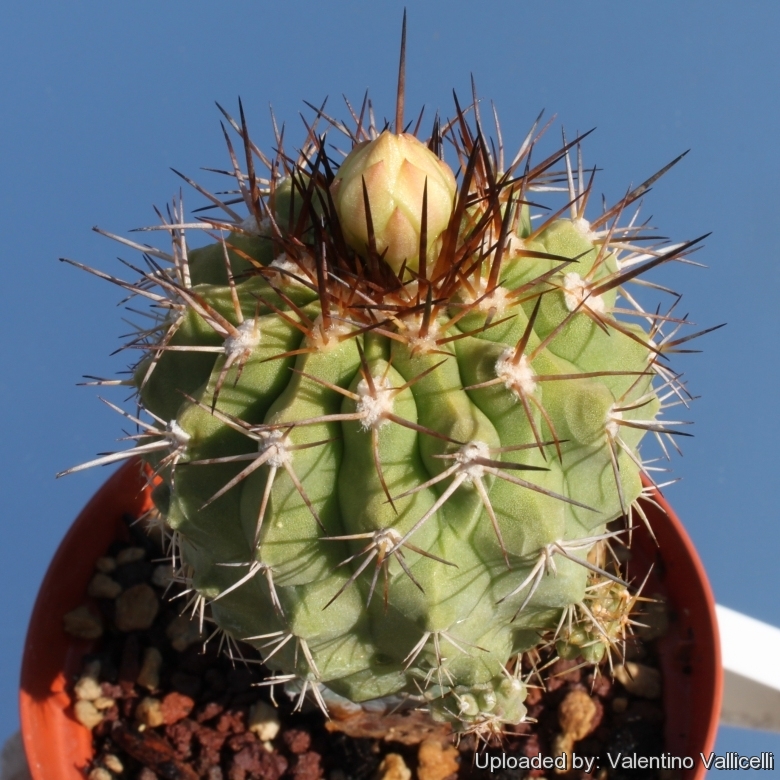
Copiapoa ahremephiana Photo by: Valentino Vallicelli
RMF53 (Collector: Roger M. Ferryman) Locality: Caleta Botija, North of Paposo, 02 Antofagasta, Chile.
Origin and Habitat: It is strictly endemic to the lower part of the Botija Valley (Quebrada Botija ) North of Paposo, 02 Antofagasta, Chile, over a coastline length of about 2 km, 1 to 2 km inland.
Habitat: It grows in a bare area where it is virtually the only perennial vegetation of the place. It is a relictual specie at risk of extinction because the only plants surviving on the stony ground are clustered, very-old, (often several hundreds years old), specimens, without any seedling or younger plant. The environmental conditions are so harsh that no seedling can survive and renew the population.
Synonyms:
Description: Copiapoa ahremephianaSN|9760]]SN|9760]] forms tight clumps with up to 15 heads and to 50 cm in diameter.
Stem: 4 to 8 cm in diameter with a whitish-grey waxy skin.
Root: Fibrous and woody with a brownish bark.
Ribs: 15-18 up to 4 mm high.
Areoles: About 10 mm apart, slightly sunken, at first with grey wool then naked.
Spines: 4-7 not divided into central and radial, straight up to 2,3 cm long. At beginning amber coloured, becoming brownish-black with age.
Flowers: Yellow, campanulate, wide opening, about 2,2 cm in diameter.
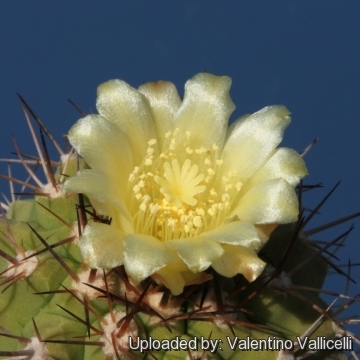 Copiapoa ahremephiana Photo by: Valentino Vallicelli
Copiapoa ahremephiana Photo by: Valentino Vallicelli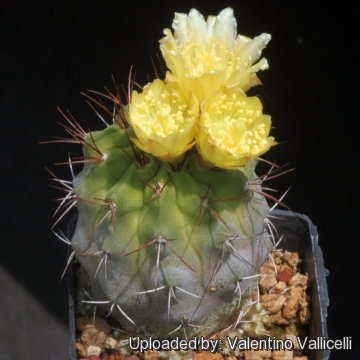 Copiapoa ahremephiana Photo by: Valentino Vallicelli
Copiapoa ahremephiana Photo by: Valentino Vallicelli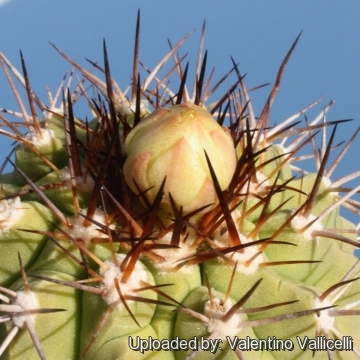 Copiapoa ahremephiana Photo by: Valentino Vallicelli
Copiapoa ahremephiana Photo by: Valentino Vallicelli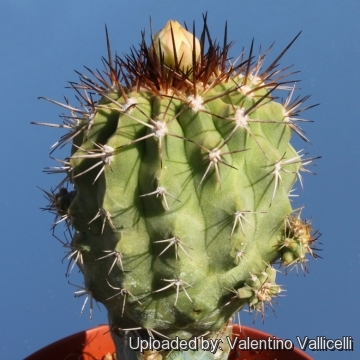 Copiapoa ahremephiana Photo by: Valentino Vallicelli
Copiapoa ahremephiana Photo by: Valentino VallicelliCultivation and Propagation: This cactus is kept for the beauty of its form. It is a summer grower species slow but easy to cultivate that like many cacti of the Peruvian deserts, present some problems in cultivation. It is in fact somewhat rot prone if kept in a non ventilated place.
Growth rate: It is a relatively rapidly growing and easily flowering species that will make clumps given the best conditions.
Soils: It likes very porous standard cactus mix soil, but can become too elongated if compost is too rich.
Repotting: Use pot with good drainage.
Watering: Water regularly from Spring to Autumn, but do not overwater and let the soil mix dry between waterings (Rot prone), keep dry in winter.
Fertilization: Feed with a high potassium fertilizer in summer.
Hardiness:Keep warm and dry in winter (10°C) to avoid rot. Not highly tolerant of a great deal of frost. (Frost tolerance 0°C)
Exposition: Requires full sun or light shade and careful watering to keep plant compact with strong coloured spines. Tends to bronze in strong light, which encourages flowering and heavy spine production. It must be protected from excessive heat and sun in summer.
Uses: It is an excellent plant for container growing. It always looks good and stays small. It look fine in a cold greenhouse and frame or outdoor in a rockery.
Pests & diseases: It may be attractive to a variety of insects, but plants in good condition should be nearly pest-free, particularly if they are grown in a mineral potting-mix, with good exposure and ventilation. Nonetheless, there are several pests to watch for:
- Red spiders: Red spiders may be effectively rubbed up by watering the infested plants from above.
- Mealy bugs: Mealy bugs occasionally develop aerial into the new growth among the wool with disfiguring results, but the worst types develop underground on the roots and are invisible except by their effects.
- Scales: Scales are rarely a problem.
It is wise to treat your whole collection with a systemic insecticide twice a year in spring and autumn.
- Rot: Rot is only a minor problem with cacti if the plants are watered and “aired” correctly. If they are not, fungicides won't help all that much.
Propagation: Seeds (or offsets if available) or by grafting onto a strong grafting stock like Selenicereus sp. Such grafted seedlings can be successfully cultivated for years. Grafting is often used to speed growth rate and to create a back-up to plants in collection. Seeds germinate in 7-14 days at 21-27° C in spring, remove gradually the glass cover as soon the plants will be well rooted (ca 1-2 weeks) and keep ventilated, no full sun for young plants!














